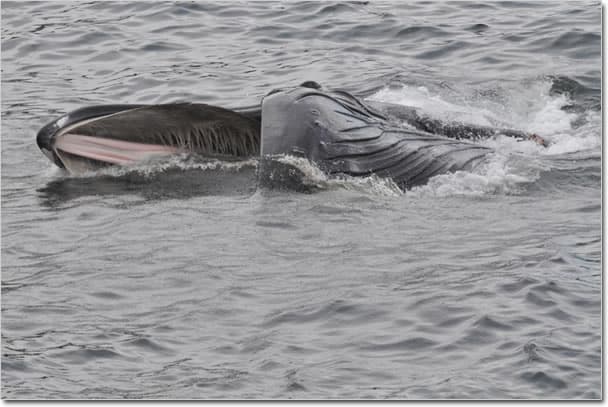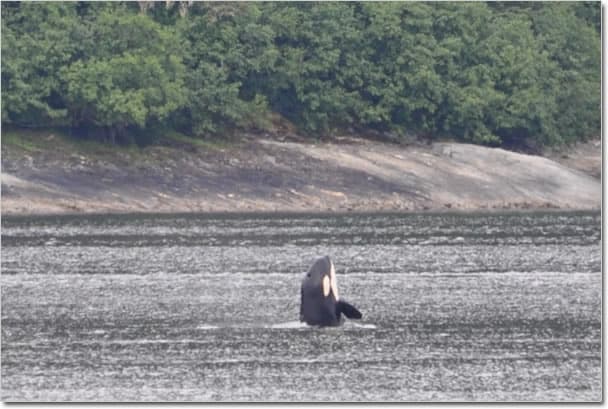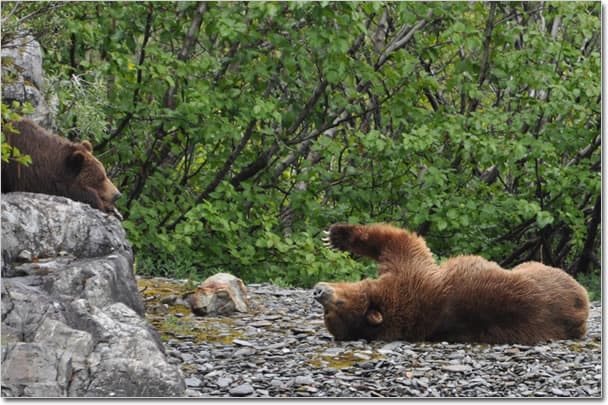
Last week I was in Alaska, the first stop on a quest to find some Out of Africa exceptional wildlife viewing opportunities that would be of interest to my African safari clients. All of the principles of The Wild Source still apply and my search is for magnificent wildlife and wilderness experiences of the highest quality while keeping the experiences intimate and free of human crowding.
Fittingly I chose to try out American Safari Cruises who offer small yacht explorations on three ships that hold just 12 (Safari Spirit), 22 (Safari Quest), and 36 (Safari Explorer) people respectively. The small boat sizes offer the ability to maneuver into the most out of the way corners, delivering exclusivity in the wilderness. The intimate size of American Safari Cruises boats also guarantees that everyone can do all activities as desired – skiffing, sea kayaking, and hiking on offer daily. For my trip, I was on American Safari Cruises’ Safari Explorer.
American Safari Cruise: Focus is on Wildlife
Much like an African safari, all activities, meals, and drinks are included, service is supreme and best of all there is a complete focus on wildlife viewing, including interrupting meals when necessary. This promise was proven when our final dessert on the Safari Explorer was about to be served but instead many of us rushed to the skiffs as a mother bear with three young cubs was spotted out the dining hall window.
I was ecstatic with my experience and believe boat based wildlife viewing is a great approach in such a dynamic environment. In Southeast Alaska, roads are few and the waterways and coastal beaches are full of animals and spectacular scenery. In fact I was so pleased with my experience on the Safari Explorer, that I have added American Safari Cruises to my client offerings.

American Safari Cruises Wildlife Viewing
Humpback Whales
Southeast Alaska is known as a paradise for marine mammals and indeed our sightings were varied and outstanding. The highlight species that draws people is the humpback whale and they were sighted often throughout our seven night trip.
On every African safari I hope that there will be at least one ‘National Geographic’ moment, the kind of unbelievable footage you see on t.v. after film crews spend months or years capturing such events and yet we are sometimes fortunate enough to see on our relatively brief holidays. We certainly had just such an event on our very first full day at sea. What started off as excitement over our first humpback whale sightings soon turned into sheer amazement as the behemoth whales started rocketing through the water with their mouths unhinged, scooping up copious amounts of herring, krill and water right next to the Safari Explorer.
It was shocking when this began as I leaned over the bow watching for a whale to surface and all of a sudden within ten feet of the Safari Explorer rose up this enormous open mouth, it happened so fast I couldn’t even snap a photo or believe my eyes. Fortunately this action was repeated many times as five or six humpback whales engaged in what is known as lunge feeding all around the Safari Explorer. I have been blessed with so many extraordinary wildlife encounters that it is pointless to try and rank them but clearly this was one of the greatest animal behavior events that I’ve been privileged to witness.

Another famous resident of these waters are the orcas (also known as killer whales). Compared to humpback whales, they are less numerous and each pod is extremely wide ranging and thus seen less often.
These are a favorite species of mine to observe as they are extremely active with a wide range of behaviors. They are a socially complex species – in many ways they remind me of the African wild dogs that I love to see so much – in fact the orcas have sometimes been called the wolves of the sea.
We had not seen any orcas in our first five days, so I had low expectations and was enjoying some camaraderie at the bar when word came in that orcas had been sighted outside. It was just after 10 p.m. – twilight in the land of the northern sun – so off we ran to the bow. It was thrilling to see a beautiful pod of orcas traveling near us. This pod was traveling so our viewing was limited to twenty minutes or so and their behavior was limited to cruising through – nonetheless it was a complete thrill to see these magnificent animals in the waning light. I was extremely pleased as I went to bed that evening having seen the species I most wanted to encounter.
Good fortune was on our side though as the following afternoon I was on the bow of the Safari Explorer and in the far distance we spotted the unmistakable dorsal fin of orcas ahead. This would be the start of an hour and a half observation with a pod of orcas that displayed a wide range of astounding behaviors including:
- A couple of full breaches out of the water
- Spyhopping (when they stop and put their head out of the water as in the picture above)
- Swimming with their bellies and pectoral fins up
- Lots of tail lobbing where they would raise the tail straight up out of the water and then slap it down three or four times in a session
One enormous male played in a kelp bed right near us, twisting around and then shaking it loose. Even watching them swim off in a formation of five orcas including a baby was sensational.

Sea Mammals and Birds
Beyond the whales we saw stunning athleticism of Dall’s porpoises riding the bow wake of the ship, brief glimpses of harbor porpoises, and had numerous fantastic sightings of sea otters, harbor seals and large Stellar’s sea lions.

Bald eagles were the star attraction in the air and we surely saw hundreds of them. Soaring by, fishing, perched in trees, on rocks, on beaches and even perching on glaciers. They were absolutely common throughout most of the area we traveled. Puffins were my favorite of the many seabird species.

Land mammal viewing focused almost entirely on bears. Wherever there were tidal beaches or grasslands in view, eyes scanned for the possibility of brown bears. We were successful four times with finding bears that we could observe, there were another two times where the bears disappeared in the forest before we could get much of a view.
Two of our viewings were particularly interesting and both were spotted during our meals. First as breakfast was coming to a close we found a very inquisitive bear who was even standing up a couple times trying to see something. As the ship moved forward we could see there was a mother bear, and she was huge, with a yearling cub.
Perhaps the standing bear was interested in mating or just if there might be a meal to share but the mother was not in a hosting mood and sent him a signal that sent him running. She was behind some rocks so not sure how she communicated her message but it was crystal clear and he did not come back. She then paraded around her gigantic self on the rocky shore before laying down and inspecting her claws while her cub lounged on the rocks above.

Our other key bear sighting was the last sighting of any kind on the trip as a guest spotted a bear through the dining hall window just as dessert was about to arrive. On closer inspection we discovered that this was a mother bear and she had three little spring born cubs. We quickly mobilized to the skiff for a closer approach, a sensational way to close out our boat based safari.